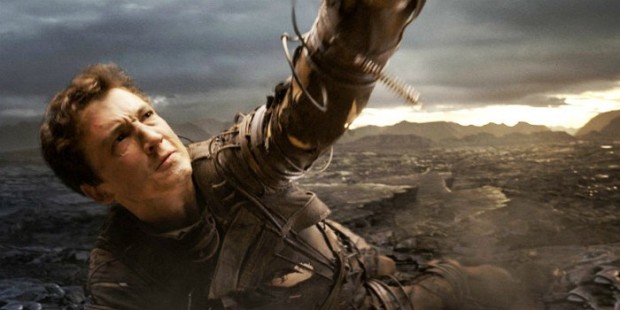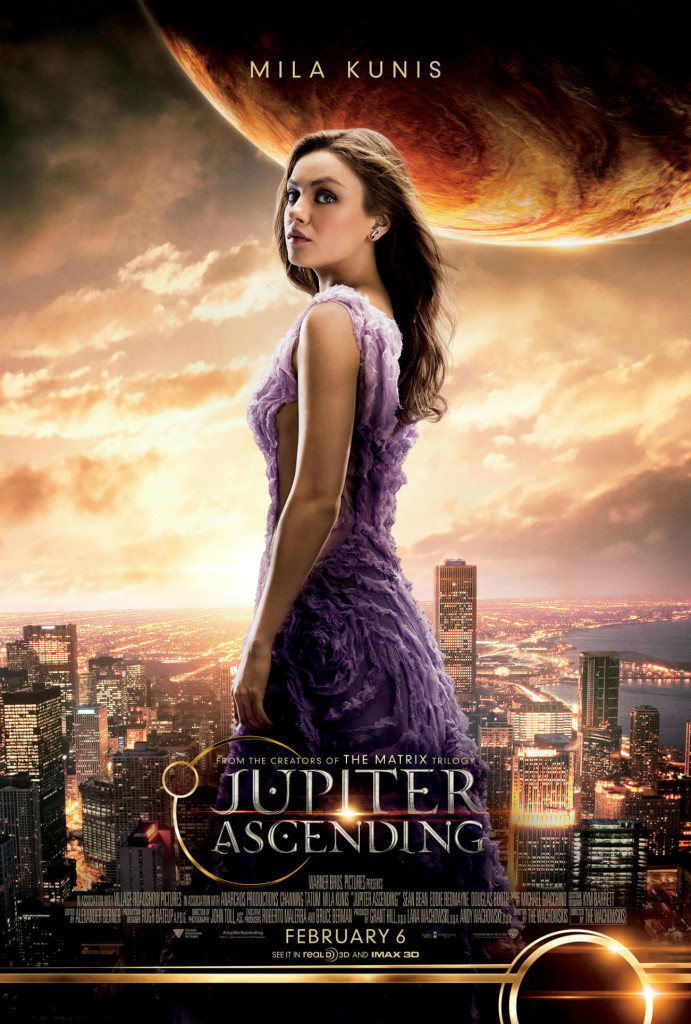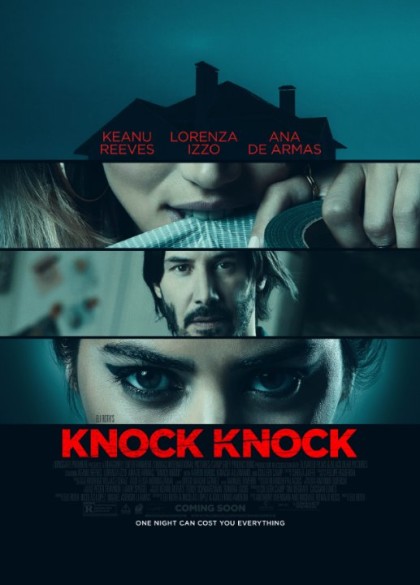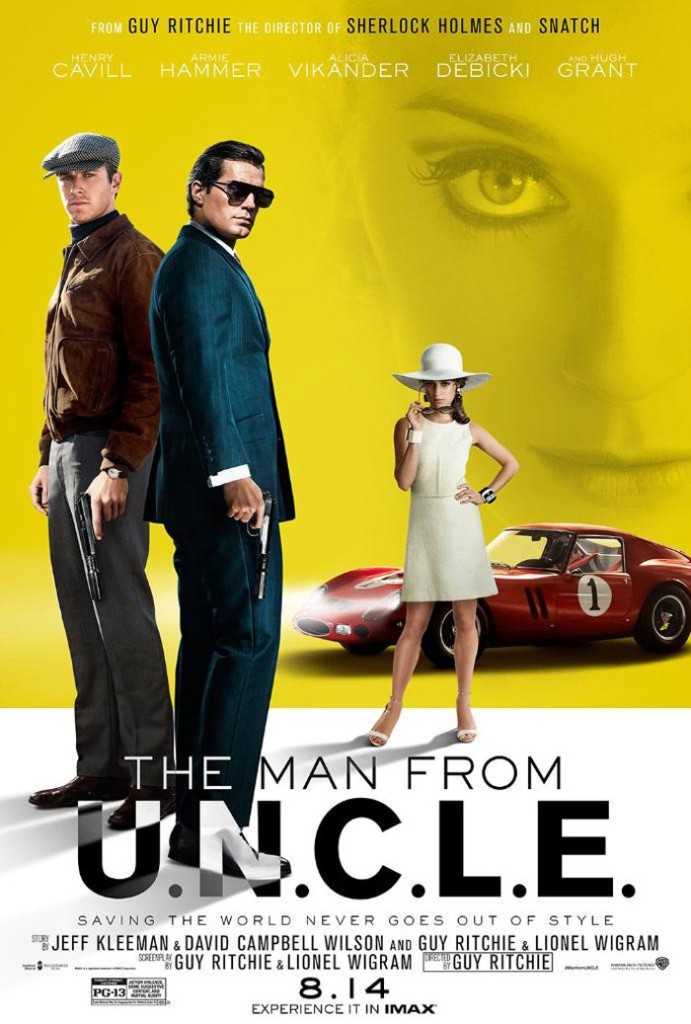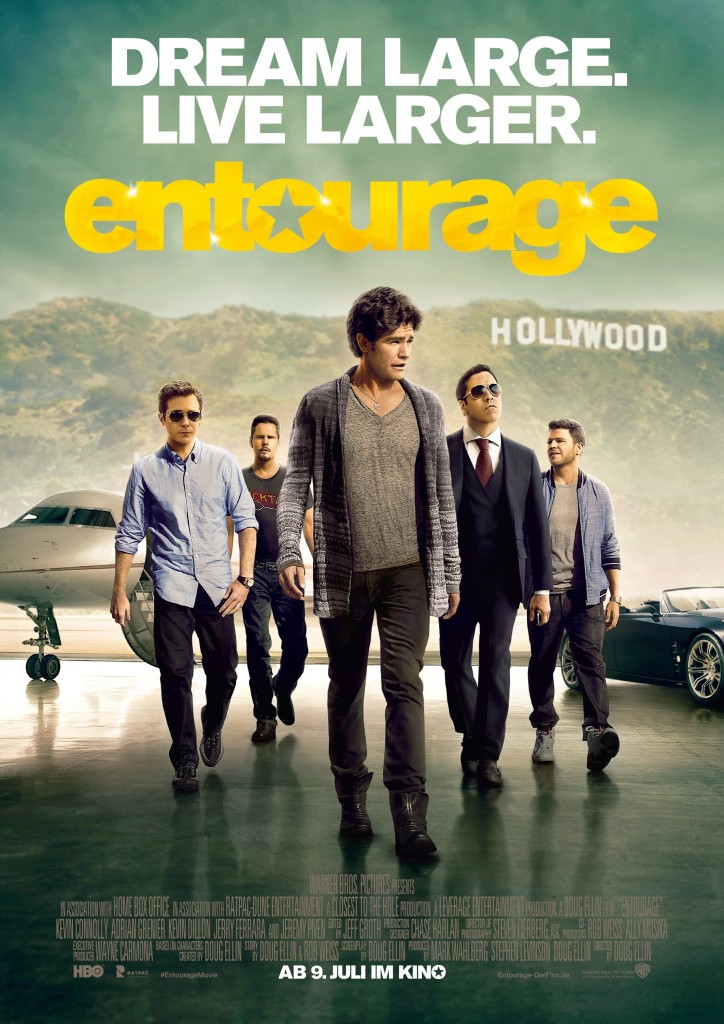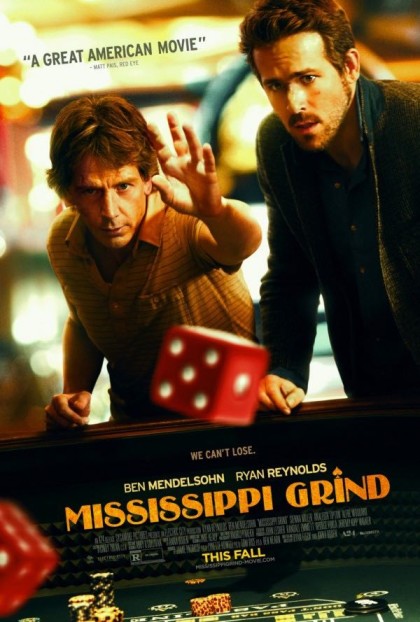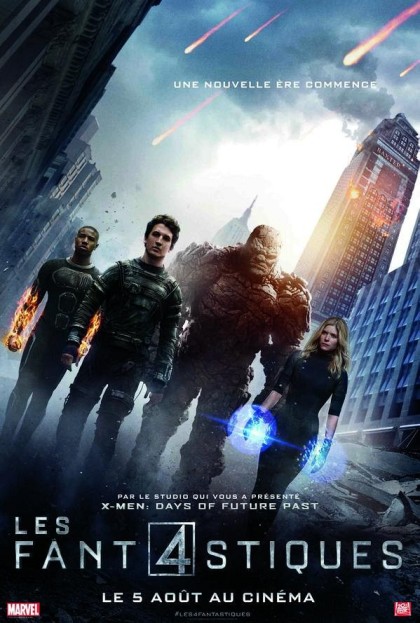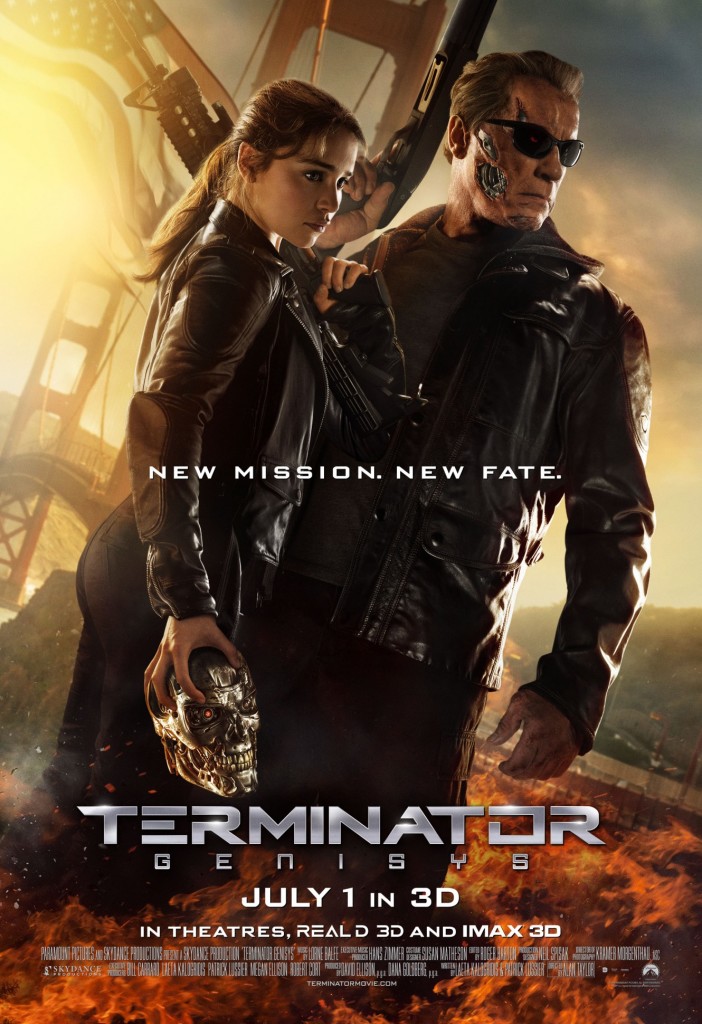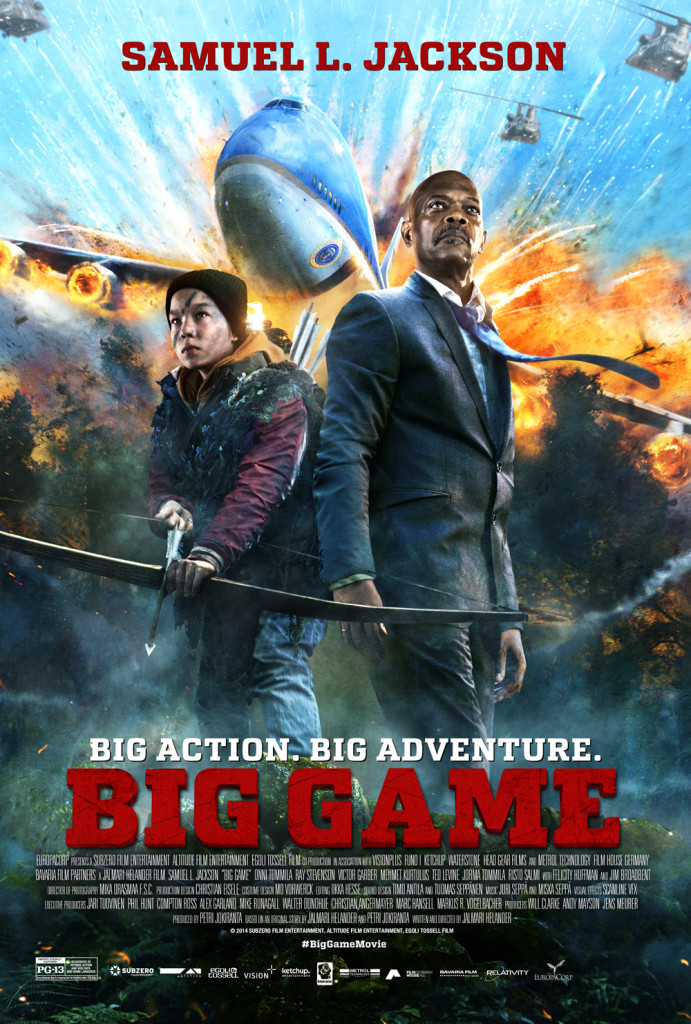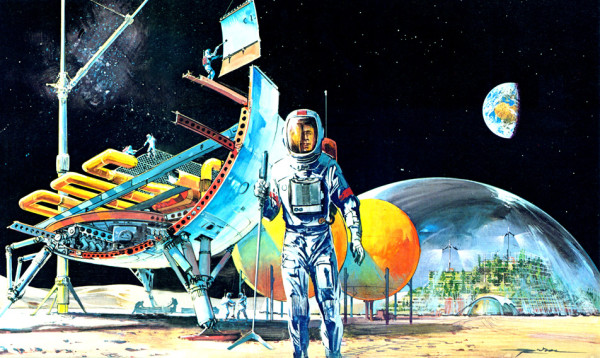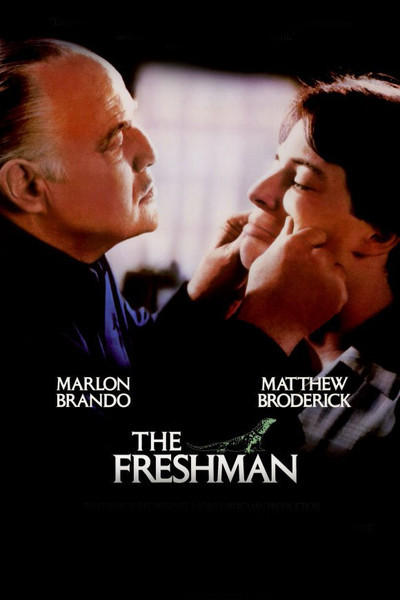Search Results for: F word
I don’t like trashing movies. I really don’t. By and large, Hollywood is a place where people love movies and are doing their best to make good ones. “Nobody sets out to make a piece of shit,” some producer once said. And so you don’t want to trash someone who tried like hell and just couldn’t get it poppin. However, there are instances where people who don’t value the opportunity they’ve been given get to make films, or times where ego dictates a film getting made, or where the almighty dollar becomes more important to the studio than making a good movie. And in those cases, I think it’s okay to call the movie out. Almost every movie on my Worst Of List falls into one of these three categories. So yeah, I’m going to vent a little bit here. But in order to give the post some value, I’ll throw in a few screenwriting lessons along the way. Let’s get started, shall we?
10) Jupiter Ascending – Calling the Wachowskis misguided at this point doesn’t do their status justice. Sure, the two are the original imagine dragons and they possess spoon-bending directing skills. But they’re stuck in “M. Night Shalaman Land,” unable to realize how badly their writing is screwing up their movies. Jupiter Ascending is a classic case of writers trying to cram way too much story into their script. George Lucas had to come to terms with this with the original Star Wars, which was supposed to have most of the stuff that ended up in Empire and Jedi. He finally relented, realizing it was too much story to tell, and focused on a more contained version of the story (by the way, there isn’t a sci-fi adventure script I’ve read that didn’t have too much story in its first few drafts). What that script gained in the process was urgency – becoming one of the greatest chase films of all time. Jupiter Ascending, with its bulky and bloated plotting, was the antithesis of this, a lumbering leviathan, and a lesson to all aspiring screenwriters to KEEP YOUR STORIES LEAN!
9) Knock Knock – Maybe it’s serendipitous that our number nine slot involves the actor who helped bring the Wachowskis into the public spotlight. This one really hurts though. For like two seconds, Keanu Reeves was cool again. John Wick brought the “Whoa” back. Which meant we could look forward to a Keanu who would receive better scripts, get better offers, and reclaim his spot on the A-list. Except Knock Knock. Who’s there? Eli Roth. If there is a working director with a bigger name who is less talented than Eli Roth, I’d like to know who he is. Knock Knock takes a somewhat interesting premise – a married man who lets two stranded trouble-making teens into his home while his family is out of town – then writes half a screenplay out of it. That’s right. Knock Knock runs out of story 60 minutes through. The whole idea with a premise like this is you make it a one-night ordeal – a series of escalating problems that climax before daylight. Yet Roth and his writing crew inexplicably send the girls home the next morning, only to have them show up a day later to, I guess, inflict more pain on Keanu. Except by that point, ALL THE TENSION IS GONE, leaving us confused as to what the point of the story was anymore. The screenwriting tip on this one is pretty obvious. Once all the air is let out of the balloon, you can’t blow it back up again.
8) Man From U.N.C.L.E. – This was the most bizarre movie experience I had all year. I have never seen a movie with more beautiful cinematography and more talented directing come across so dead on the screen. It didn’t help that everybody in the film looked like they’d just smoked a pound of herb! Oh, and that Henry Cavill and Armie Hammer have the collective personality quotient of a monk at a hospice center. Luckily, not many people had to suffer from these performances since THIS MOVIE HAD THE WORST TITLE OF THE DECADE and therefore NO ONE SHOWED UP!!!! Okay, just work with me for a second on this. You’re John Smith living in Minnesota and you want to see a movie this weekend. I tell you the movie, “Man from U.N.C.L.E.” is playing. What do you think the chances are of him having any idea what the movie is about from that title? I’ll give you a hint. NEGATIVE 9 BILLION PERCENT! But for shits and giggles, let’s let him watch the trailer. That should make things clearer right? Um… sorta? It seems to be a buddy cop movie set in the 1960s? And one of the guys is Russian (when has a movie that featured a Russian accent in one of the main roles EVER done well in America????)? And they’re trying to stop something? And what do you tell your friend John when he asks why “uncle” has a bunch of periods inserted into it? I have no idea why anybody thought this movie had a Jawa’s chance in the Sarlac Pitt of doing well. Screenwriting lesson: Make sure your title helps sell your movie!
7) Entourage – This one seems like easy pickens. But it’s on the list because it’s bad in a way that none of the other movies are bad. It’s bad because it’s empty. More than all of the other entries, Entourage has the least story to tell. Indeed, when the end credits roll, it seems like we’ve been watching for 30 minutes. Vince (the lead character) directing a movie is supposed to be the “big hook” that makes this Entourage story worthy of feature-status. But Entourage the Movie is an example of why some stories are best kept on the small screen. Entourage has always been about the dialogue and the interaction between its lively group of characters. What it never purported to have was STAKES. You never felt like if the characters failed that anything bad would happen to them. And since movies are one event (as opposed to 100), the stakes need to be giant in them. Since Entourage had never operated in that arena before, it didn’t know what to do when given that mandate. And, oh yeah, since we were talking about Mary Sues the other day, isn’t Vince the biggest Mary Sue in the history of television? No movie felt like it had robbed me of my money more than this one.
6) Mississippi Grind – No film implored me to want to scrape my eyeballs out with rusty sporks in 2015 more than Mississippi Freaking Grind. I consider the hack that got Mississippi Grind made one of the industries biggest issues, and a loophole that bad writer/directors will continue to exploit if financiers don’t stop funding these. Basically, what you do is you write a non-story that centers around two miserable characters. Actors love playing miserable characters! So even though the story sucks balls, they sign on. And once you have known actors, you can get funding. And hence Mississippi Grind gets made. But the ridiculousness doesn’t stop there. Critics typically give these movies high marks because they’re different from Hollywood flicks and there’s at least one good performance. These factors help mask the fact that movies like Mississippi Grind are absolutely awful. Nothing happens in this fucking movie!!!! Two people gamble and talk and wallow in misery. FOR FUCKING TWO HOURS!!!!! There is never a point to any of it. These self-indulgent pretentious exercises in filmmaker masturbation do nothing other than convince a few poor souls to mistakenly lay down $5.99 for an Itunes rental. A mistake, I’m ashamed to admit, I made. I should’ve known better.
5) Fantastic Four – I know. Another gimme. We all heard about what happened. The director stayed in his trailer half the shoot, preferring to snort lines instead of help his actors read them. He’d get kicked off directing duties for a future Star Wars movie as a result (thank God!). They needed to bring in other directors to try and save the film. It was a mess. But movies have been saved from doom before. Maybe Fantastic Four could do the same? I’m afraid not, my friends. My best guess, from watching the film, is that the only stuff director Josh Trank shot before he went crazy was the first act. Because that’s all this movie is! One giant first act. I can’t tell you how many scenes there were of people in labs or on computers “researching things.” In a typical Hollywood blockbuster, those shots would’ve been relegated to a 60 second montage. Here they’re the main souce of plot for an entire hour! At a certain point it became a game of “How many computer generated DNA strands can characters look at in a single film?” Then, when we FINALLY get to the point where they go to the “other dimension” that they’ve spent 90 minutes researching, it’s a terribly composited incredibly ugly half-CGI empty moon-like surface. THIS IS WHAT WE’VE BEEN WAITING FOR THIS WHOLE TIME???? TO COME HERE??? This movie probably would’ve finished higher on this list if I didn’t feel so bad for all the people who had to work on it.
4) Terminator: Genisys – Here’s some advice for Hollywood studios. Do not, under any circumstances, deliberately spell a word wrong in your sci-fi title. It is a guarantee that your movie will suck. I’m serious. Star Wars was not spelled, “Star Warz.” Or “Starr Worrz.” Is there any person on this planet who didn’t know this movie was going to be terrible as soon as they saw this misspelled title? And yet still, after lowering the bar that much, Terminator: Genisys still somehow managed to disappoint us. As I’ve always said on this site, if you’re going to do time travel, KEEP IT SIMPLE. Time travel is inherently confusing. Trying to mash multiple time-jumping storylines together is a recipe for movie suckage. To me though, it comes down to this director. Here’s a guy who took one of the most iconic scenes in science-fiction history, the naked Terminator walking up to a gang of punks and demanding their clothes, and changed the haircuts of the punks (from blue spiked hair to black normal hair and from a short cut to a green mohawk) because he “felt like it.” Any director who doesn’t understand why you don’t change the hair of the characters in that scene SHOULDN’T BE ALLOWED TO FUCKING DIRECT THE MOVIE. What’s interesting about this film is that it was casting at the exact same time as The Force Awakens, and each production was fighting over the same actors. I can only imagine if JJ Abrams would’ve brought Emilia Clarke into the Star Wars universe. His pitch would’ve been so simple: “Come with me if you want your career to live.”
3) American Ultra – American Ultra puts every rant Max Landis has made on Youtube and Twitter into question. If he thinks this movie is good writing? I don’t think you can trust anything the guy says, whether it be about Mary Sues or lookie loos or piles of doo-doos. I can’t remember the last time a movie has made me hate its main characters so quickly. Our “hero” is a loser who smokes pot all day (why do I get the feeling this “trait” was based off of someone the writer knew?), refuses to do anything, doesn’t try to make his life better, whines all the time, and is generally a miserable worthless human being who has no interest in bettering his life. His girlfriend isn’t much better. She ALSO smokes pot all day, stays in like her boyfriend, gets pissed when her boyfriend doesn’t want to do anything, and is generally a humorless annoying excuse for a human being. THESE ARE OUR HEROES!!!!! What Max Landis doesn’t realize is that nothing he writes after he’s introduced us to these two people matters. It doesn’t matter if our protagonist all of a sudden gains Jason Bourne like powers. BECAUSE WE HATE HIM! A script can recover from a morally questionable character introduction. But it CANNOT RECOVER from a character the audience detests to the very core. But even if Landis managed to get that right, this is still a confused premise that’s only celebrated at 3 in the morning after everyone’s too trashed and too high to know a good idea from a bad one. “Like, he’s a stoner, who’s also, like, Jason Bourne. Wouldn’t that be awesome?” “Yeah dude. Max, you should totally write that.” “I can probably belt out a first draft by breakfast.” “Can I play the dealer?”
2) Aloha – This is the most significant of the movies I’ve put on this list because when I first reviewed this script, which was beyond awful, I got a call from one of the producers of the film chastising me for reviewing an early draft of the script (strangely enough, I kid you not, the final draft of the script added a major villain character named, “Carson”). Yet I knew, just knew, that there was no way this could ever become a good script. And it wasn’t because of the writer. This is Cameron fucking Crowe we’re talking about here, writer of Jerry Maguire and Say Anything! But the premise was so confused, so unsure of itself, that rewriting it was be akin to reorganizing the sheet music on a Nickleback song. Let this be a warning to all of you that if your concept is flawed from the beginning, there’s no way to save it. You can’t rewrite something that never had legs to stand on in the first place. And I know you’re all wondering, “How do you know if your concept is flawed?” There’s no universal answer to that other than GET FEEDBACK. If people look confused when you pitch them your idea? Or if you get a lot of polite observations that the concept is kind of hard to wrap their head around? That’s usually an indicator that your concept doesn’t work. In this case, it was that the concept was unfocused. There was no clear unifying idea, like in, say, Jerry Maguire: “A top sports agent must start back at the bottom after being excised from the biggest sports agency in the world.” What’s the unifying concept in Aloha? “A pilot comes to Hawaii to make sure a satellite launch goes well to stave off a rival Chinese company while rekindling two separate love interests and keeping the local Hawaiian government at bay?” I think some writers assume they can write their way out of a sloppy concept. It never happens.
1) Big Game – We’ll finish this list on a lighter note. I did not hate this movie. But it is unquestionably the worst movie of the year. The plot plays out like a bad 1980s Sylvester Stallone movie. The dialogue is so on-the-nose, you leave each line with a fresh blackhead. The characters are so over-the-top, you wonder how they keep climbing back onto your side. Just the premise alone – a stumbling-over-his-lines Samuel Jackson as president gets teamed with an Inuit boy who uses his hunting skills to help the president evade a Middle Eastern terrorist who doesn’t just want to kill the president, but hunt him down like a wild animal – is so bizarrely conceived you’re wondering if this is one of those MTV Movie Award comedy promos where someone’s decided to use the leftover footage and try and turn it into a feature. I was so fascinated by this awful collection of ideas, I went looking for more info on the film, and only then did the picture become clearer. The director is a Finnish guy from Helsinki who had, up until this point, only directed short films. I began to imagine a backstory for this man, one similar to the family in The Wolfpack, where he’d been chained to his bed-post growing up solely on a diet of cheesy 1980s action movies. What I’m about to say next is going to sound preposterous. But I swear to you I believe it’s true. I think this script was originally written in Finnish and the director simply put it through Google translate to get the script we see now. Like that’s how wonky this movie is. I cannot believe that this movie exists. I just can’t!
Tuesday is Best Movies of 2015!
Wednesday is Best Amateur Scripts of 2015!
Absolutely LOVED Force Awakens!!!
Kylo Ren best film villain of the past decade. Rey was better than Luke Skywalker in Ep IV. BB-8 somehow made me forget 3PO and R2. Finn was huge disappointment. Like almost as badly conceived as Queen Amidala. That was the only major misstep.
For those saying this was a copy-cat job don’t realize how much JJ and Kasdan actually did here. Was expecting a terrible script based on reviews. This was deft screenwriting here. One major non-spoiler gripe. But you’ll have to wait til Monday for my screenplay-centric review!
In the meantime, feel free to discuss the movie in this thread. Please be considerate and put, in capital letters, “SPOILER” above all spoilers. If you do not include that word, we will consider what you’re saying to be spoiler free.
Genre: Sci-fi
Premise: A teenage boy, Caleb, and his friends, all of whom live on a moon mining colony, take a road trip to an old cave to fulfill a wish from Caleb’s father.
About: This script just finished NUMBER 1 on The Hit List, which is the screenwriting community’s appetizer for the later-to-come Black List. The Hit List is run by The Tracking Board and consists of the best SPEC screenplays of the year (the Black List, by contrast, tabulates the best of all scripts, including assignments). Because most professional writers are being hired by studios to write their projects, and because the best way to break into the business is still with a good spec, the majority of the writers on The Hit List are writers getting noticed for the first time. To give you a little perspective on the list, Bubbles, which I thought was great, finished number 2. The Water Man, which I reviewed last week and absolutely loved, finished number 4. And Collateral Beauty, written by Allan Loeb, which created some debate on the site, finished number 19. Actually, a script that was featured here on the site, Carver Gray’s Unlawful, finished in front of Collateral, in the number 12 spot. Congrats, Carver!
Writer: John Griffin
Details: 113 pages
So to start off, a lot of you have been asking about the Scriptshadow 250 and when the damn announcements are going to be made. And I feel your impatience! The two hundred and fifty script reads amongst an already busy schedule was always going to be a challenge, but maybe I wasn’t prepared for just how challenging it was going to be.
So the reality is, if I have any hope of finishing this month, I’ll likely need to take a week off from posting to do so. And that week will likely be next week. I’ll be hunkering down like a Jawa during a sandstorm and calling upon my speed-reading Force powers to get things finished. I’ll keep you posted on how that’s going. But there’s a chance this could eat into Scriptshadow posting throughout the month, with Christmas Week coming right after that, and then the weird “nothing week” between Christmas and New Years.
What sucks is that we’re swinging into the heart of “Awards Season” for screenwriting, with The Hit List coming out last week and the Black List soon to follow. At the very least, we’ll get one of those scripts in to review, as “Crater” nabbed the top spot on this list. Let’s see if its lunar pattern matches up with good screenwriting.
It’s sometime in the future where we now have a mining colony on the moon. Caleb O’Connell, 14, is a son of one of the miners. A big reason Caleb’s father and the rest of these miners agreed to this gig was that their children got to go to “Omega,” a utopia planet that, normally, only the richest people get to go to. That timeline gets accelerated if your parent dies in the line of work, and Caleb’s dad just did. Which means in 72 hours, he’ll be on a ship to Omega.
The thing is, Caleb doesn’t want to leave his friends: the rebellious Dylan, the wimpy Borney, the slow-witted Marcus, and his newest friend, Addison. Addison isn’t like these kids though. She actually grew up on earth. Her father was a scientist, which makes her the one “scholar” of the group.
What we come to learn through Caleb’s flashbacks with his father, is that his father made him promise that if he ever died, Caleb would go on a road trip with his buddies to deliver an old piece of memorabilia (a bobblehead), that Caleb’s father once gave him, to a deserted moon cave. So that’s what Caleb does. He steals a moon rover with his four friends and the group heads out to complete the mission.
All of them then talk about the difficulties of being a moon miner’s kid, get their flirt on with the one female in the group, and ultimately learn to let their de facto captain (Caleb) go. The question is, when they run into trouble, will they be able to make it back to the moon colony alive?
I’m not sure I was prepared for this. I saw a number 1 script on the ultra-hip Hit List, I saw the genre “sci-fi,” I saw a title, “Crater,” that elicited a degree of edge. I went into this thing (keep in mind this was before I read the logline) thinking I was about to read something maybe Darren Aronofsky would want to direct.
So I was not expecting what I eventually got, which was “The Maze Runner meets Earth to Echo.” It was kind of like ordering a ribeye at the best steak house in town, only for a grilled cheese sandwich to show up. I like grilled cheese sandwiches… when I’m in the mood for them. In this case, I wanted the steak.
Griffin’s heart is in the right place. He’s trying to create a nostalgic teenage road trip film with heart – I’m guessing “Goonies on the moon?” And I have to give it him, he definitely created something unique.
The structure is pretty solid too. I liked that we had a time crunch here (they’ve got 72 hours). The stakes are high. These are the last moments these guys will ever spend together. There’s obstacles too. The meteor shower looms over their trip. And then, of course, there’s the goal of getting to the cave.
But the script starts sending out red flags almost immediately. One character is described as, “14 going on 15.” Ummm… what other age would he be going on to? And then the flashbacks to Caleb’s father begin. I don’t like flashbacks. But I can live with them if the rest of the script is good. However, we’d go into a flashback with Caleb and his father, only to then jump into Caleb’s father’s flashback of HIS OWN father. So we’d get a flashback within a flashback.
???
Caleb’s motivation is also murky. His father received an astronaut bobblehead from Caleb’s grandfather. So Caleb’s father gives the bobblehead to Caleb, making him promise that, if he dies, he’ll bring the bobblehead to the caves. Which I guess means that Caleb’s goal is to deliver something for a grandfather he’s never met??
Even more egregious, there’s a lot of sitting around and talking in Crater. The characters talk about everything from what earth’s like to religion to their parents’ divorces.
This kind of thing drives me crazy because it feels to the writer like they’re being “deep,” like they’re letting you into their character’s lives and learning more about them. But these scenes never resonate with readers. We don’t care if someone’s dad used to be mean or if someone is scared because when they were nine, their mom made them turn off the bedside light every night.
We care about NOW, specifically the actions our characters take. For the most part, movies are about putting your characters in peril (whether that peril be losing your food supply, like in The Martian, or losing your mind, like in Still Alice) and then seeing how they react to that peril. Actions will always speak louder than words.
Go watch Cast Away, which barely has a lick of dialogue for 90 minutes. Watch how that entire character is built on his actions. Even the similar Stand By Me, reveals so much more through action (running from the train, escaping the junkyard) than through sharing stories about each other.
And even small moments are botched in Crater. There’s a moment when the group has infiltrated an old deserted base. Late in the sequence, Addison walks into a room and sees a tree standing in the middle of it. She’s taken aback, gob-smacked, can’t believe what she’s looking at. But wait a minute. Isn’t Addison the one character who used to live on earth and therefore has seen a billion trees? Wouldn’t it make a lot more sense to have one of the characters who’s never seen a tree be the one to discover and be gob-smacked by it?
I don’t know. Maybe that early bias put me on the offensive here. But even if I’d gone into this knowing what I was getting into, these issues are pretty huge. The concept’s different. So that’s good. But man, this was tough to get behind. There was so much that felt “off” about Crater. I’ll be honest. I’m kinda surprised this finished number 1.
[ ] what the hell did I just read?
[x] wasn’t for me
[ ] worth the read
[ ] impressive
[ ] genius
What I learned: Everybody in your story needs motivation to do what they’re doing. Mad Max doesn’t join Furiosa cause he’s up for a rollicking adventure. He joins her because teaming up with her is his best option at escape. One of the common mistakes I see in these “group goes on a journey” scripts, is that it doesn’t make sense why half the people are there! At some point the writer, usually through feedback, is alerted to this. They then try to solve the problem by doing what I call, “retrofitting motivation.” This is where they have one of the characters ask the motivation-less character why they’re doing this, and that character gives a vague unsatisfying answer of sorts (here, the answer from Caleb’s friends is, “You go where your friends need you to go.”) The writer now believes they’ve solved the problem but all they’ve done is highlight it. It’s so much better if you do the hard work ahead of time and give each character a personal reason for going on the journey – or, at the very least, something they need to achieve before the journey’s over. The character ends up feeling more like an individual as well as more active. I didn’t get that from any of the supporting characters here, which contributed to my issues with the script.
Each week myself or one of the site’s readers will suggest an obscure, unknown, or under-appreciated film that you guys can then watch on a Lazy Sunday and discuss the screenwriting merits of. If you’re interested in submitting a suggestion, e-mail me at Carsonreeves1@gmail.com with the movie and a 300 word “pitch” on why you think people would enjoy the film. Together, I hope we can all find some hidden gems.
I wish someone would come up with an idea like this today. Ironically, The Freshman was way ahead of its time. It was not a big hit by any means, and it’s likely because the concept was too odd for the average moviegoer. In a time where it was harder to reach the niche film customer, the film didn’t get the credit it deserved. But this is the kind of script that, today, would finish #1 on The Black List. I’d suggest going into it not knowing anything, but if you need a little nudge, here’s the logline: A struggling film school student gets involved with a mobster involved in an extremely eccentric underground activity.
Get Your Script Reviewed On Scriptshadow!: To submit your script for an Amateur Review, send in a PDF of your script, along with the title, genre, logline, and finally, something interesting about yourself and/or your script that you’d like us to post along with the script if reviewed. Use my submission address please: Carsonreeves3@gmail.com. Remember that your script will be posted. If you’re nervous about the effects of a bad review, feel free to use an alias name and/or title. It’s a good idea to resubmit every couple of weeks so your submission stays near the top.
Genre: Horror/Thriller
Premise (from writer): When a desperate man drags his depressed wife and step-daughter to rural Germany for family support; what he discovers instead are dark cult roots, an isolated hippy haven, and the terrifying realization that they may not be free to leave alive.
Why You Should Read (from writer): My name is Alex Ross, and my screenplay, HEXEN, won the grand prize in the Script Pipeline competition (out of 3,500 scripts) and is also highly rated on the Black List as “top unrepresented horror”. Here’s why I would like the script to be reviewed: I see HEXEN as a fresh take on a very stale and predictable genre. It’s a throwback to the thrillers from the 70’s (Rosemary’s Baby, The Shining, Don’t Look Now), but with a modern, realistic approach. It purposely breaks the tired “rules” of horror storytelling, which audiences have come to expect by now. A main protagonist vanishes half-way through, character’s motives are ambiguous, and the ending is left somewhat open-ended. Say what you will about the script… one thing it’s not, is predictable. However, it has alienated some who are looking for something a little more mainstream, and I’m finding it difficult to find industry pros who can see outside the box, and who are willing to take a chance and get behind it. I need all the help I can get…
Writer: Alex Ross
Details: 97 pages
Swweeeeet. We’ve got a contest winner here! Always fun to see which script beat out thousands of others. No time to waste so let’s get to it!
40-something Julian Nichols never expected his life to turn out this way. He recently got laid off. He and his wife, Anna, have grown so distant, they barely talk anymore. And they’ve got a beautiful young daughter, Jenny, who they’ve got to support with no income.
That’s why we meet them at the airport. The family is headed to Germany, where Anna used to live. She had a tough childhood, growing up in one of those commune-cult situations with a crazy fucking dad who thought mass-suicides were the bee’s knees.
They’ve gotten word that her father is on his deathbed and if they come and show their faces, sign a few documents, that large piece of land he owns could result in a desperately needed slice of the profit pie. Neither of them want to be here, but it’s a necessary evil.
Once they get to the secluded commune-turned-farm, they start meeting the folks that run the place, including Anna’s brothers, alpha-male Christian and mentally disturbed Thomas. Rounding out the Trio of Weird is Michael, a large man who has a strange fetish for calling people “moron.”
Julian’s surprised by how forthright Christian is. He tells him the whole story about their fucked up commune life and how Anna’s dad used to video tape her 24-7. Not creepy at all. But the longer the stay goes on, the sketchier Christian gets. He and the rest of the former compounders like to do drugs. Like, a LOT of drugs.
It isn’t long before Julian and Anna realize every drink they’ve had has been spiked, and therefore they start hallucinating, trying to figure out what’s real and what isn’t. Julian also wants to get to the bottom of where the fuck Anna’s dad is. He needs that money and he can’t get it until they deal with these documents.
What Julian will soon find out is that documents are the least of his worries. This friendly drug-loving bunch may not have left compound life behind after all…
I’d say all the way up to page 45, I was tagging Hexen as a double-worth-the-read. I thought the setting was scrumptious, the conflict was original, the suspense (something we’ve been obsessed with all week) was off the charts. And even the one thing that, if the writers master the other stuff, they eventually fail at – the character development – was strong. All the characters here had rich and intriguing backstories that added sweetness to an already sugary story.
And I’ll tell you the exact moment I knew I was dealing with something good here. It was the introduction of Christian. We see him through a child’s eyes. Jenny, the daughter, spots him butchering a still squealing pig for the compound’s food supply. I’m a huge believer that you sell a character not through what they say or what they look like or what they’re wearing (although those help). You do it through action. Meeting Christian butchering this pig immediately set up who he was.
Alex continued this throughout the script. For Thomas, the half-retarded brother, we see him playing with a group of young girls. When Jenny pricks her finger and it starts bleeding, the other compound girls say, “Lick it and make it better.” So Thomas looks both ways, sticks her finger in his mouth to “stop the bleeding,” and pulls it out, blood free. Whenever a writer is looking to convey character through action, he’s ahead of 80% of writers out there.
And then there was the suspense. It’s almost like Alex went forward in time to read my Pay-As-You-Go article, then went back and wrote this script. There were so many mysteries about this compound, about the people in it, about our heroes’ own histories, about what these compound people were going to do to our heroes. With all these unanswered questions, we had no choice but to keep paying.
In fact, Alex was so good with suspense that even when I stopped enjoying the script, I STILL had to see what happened next.
Wait a minute, Carson. You were so excited about this script a second ago. What do you mean when you “stopped enjoying it?”
Here was my problem with Hexen. It started out strong. But then it got sloppy. Once the script brought in the drug angle, and characters started hallucinating, the strong and sure hand of the writer seemed to get replaced by a genetically engineered jello man afflicted with Parkinson’s. It was almost like Alex stopped trusting himself. It was one drug-induced scene after another. Lots of hallucinations. Lots of “did that really happens.”
And don’t get me wrong. A good drug-induced vision can kick ass. The Rosemary’s Baby drug-induced group-rape scene is one of the most memorable in film history. But when you’re doing it over and over again, it starts feeling sloppy. And I know Alex built the drug-culture into the story. So these visions were motivated. But I can’t support a choice that deliberately makes a script feel sloppy. I just can’t.
And with the last 40 pages of this script reading like this, I had to concede that a script that started off destined to win Best Amateur Friday script of the year, left me feeling frustrated and confused.
This is a tough one. Hexen is like one of those relationships where the two parties fight all the time but still love each other. Those relationships are worth fighting for. I’m just not sure Alex is interested in bringing this script to the place it needs to be to get industry people interested.
He says in his “Why I Think You Should Read” that he’s finding it difficult to get industry pros to see outside the box. That’s the wrong way to think. It’s not up to anybody to see outside the box. It’s up to you to make the world outside the box so alluring that the industry has no choice but to see outside of it. If people are having trouble getting something from your script, take it upon yourself. Never put it on them.
Part of the problem is that Alex won this contest. That’s validation that what he’s done is right. So it’s natural to think nothing should be changed. But I know exactly why this script won that contest despite being imperfect. Because Alex is a good fucking writer. He knows concept, he knows character, he knows dialogue, he knows description, he knows suspense. The average contest-entrant is lucky to know one of those things.
But just like being a great singer doesn’t always equate to releasing a great song, being a good writer doesn’t mean you’ve written a great script. I think Alex needs to take a long hard look at this decision to make the second half of his script one giant drug-trip. He’s right. It’s different. But as I’ve said a million times before, different doesn’t always mean “good.”
I’d advocate for a cleaner and clearer second-half structure. What about you guys? Did the drug-trip second half work for you? If not, why? What can he do to fix it?
[ ] what the hell did I just read?
[x] wasn’t for me (but first half xx worth the read!)
[ ] worth the read
[ ] impressive
[ ] genius
What I learned: If you’re resting on the black-out move a lot, you’re probably not trying hard enough. The black-out move is when your character gets hit over the head and wakes up later. This is considered sloppy because it’s an easy way to get your character from one setting to the next without having to do the hard work of figuring out the transition. Alex uses versions of the black-out move nearly a dozen times here. I’d suggest re-watching The Wicker Man. That movie is similar to this one, and they never once use a black-out move. It’s possible. It just takes more effort.

